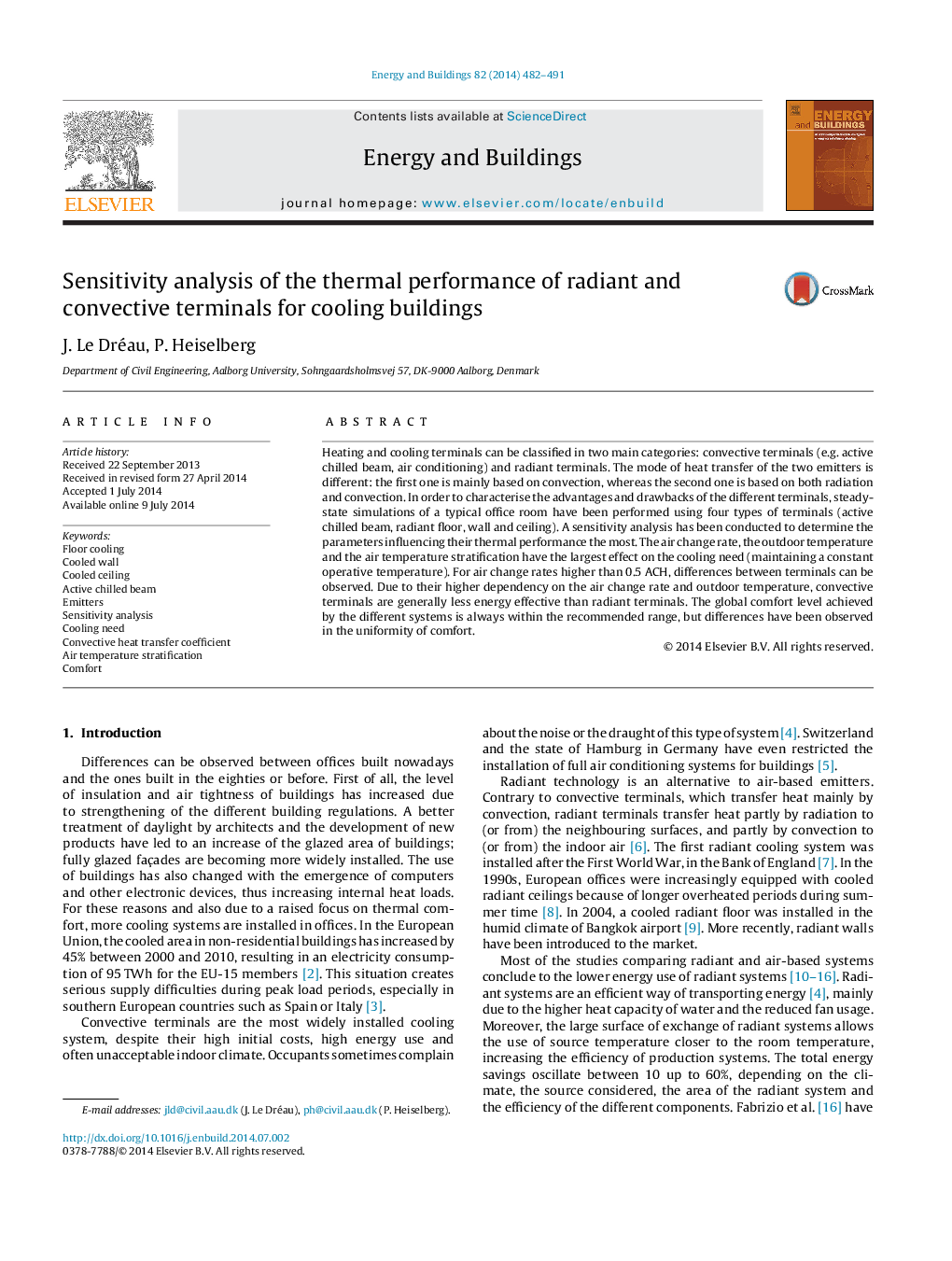| کد مقاله | کد نشریه | سال انتشار | مقاله انگلیسی | نسخه تمام متن |
|---|---|---|---|---|
| 262689 | 504047 | 2014 | 10 صفحه PDF | دانلود رایگان |
• Thermal performance dependent on the ventilation characteristics and temperature stratification.
• Efficiency of convective terminal depends on the convective flow in the room.
• Radiant terminals perform better than convective terminals at high air change rate/outdoor temperature.
• View factor between activated element and people should be optimised.
• Large comfort differences in the room with the cooled floor.
Heating and cooling terminals can be classified in two main categories: convective terminals (e.g. active chilled beam, air conditioning) and radiant terminals. The mode of heat transfer of the two emitters is different: the first one is mainly based on convection, whereas the second one is based on both radiation and convection. In order to characterise the advantages and drawbacks of the different terminals, steady-state simulations of a typical office room have been performed using four types of terminals (active chilled beam, radiant floor, wall and ceiling). A sensitivity analysis has been conducted to determine the parameters influencing their thermal performance the most. The air change rate, the outdoor temperature and the air temperature stratification have the largest effect on the cooling need (maintaining a constant operative temperature). For air change rates higher than 0.5 ACH, differences between terminals can be observed. Due to their higher dependency on the air change rate and outdoor temperature, convective terminals are generally less energy effective than radiant terminals. The global comfort level achieved by the different systems is always within the recommended range, but differences have been observed in the uniformity of comfort.
Figure optionsDownload as PowerPoint slide
Journal: Energy and Buildings - Volume 82, October 2014, Pages 482–491
